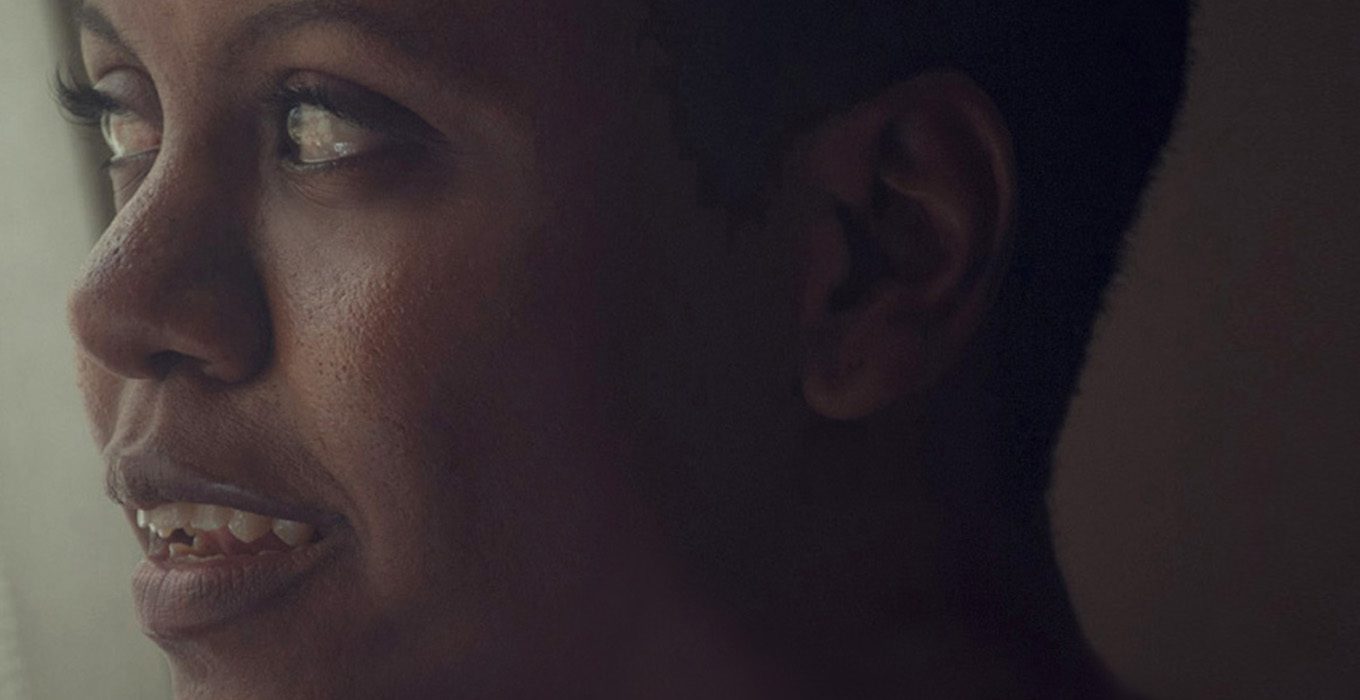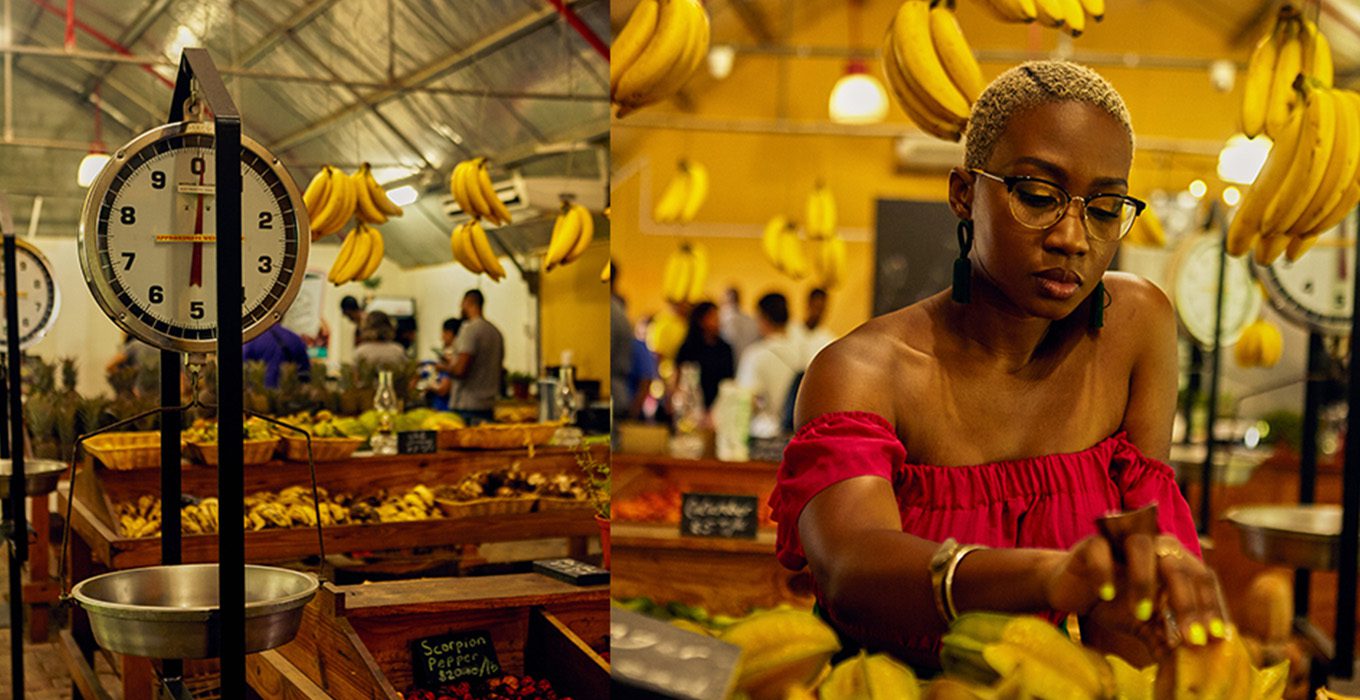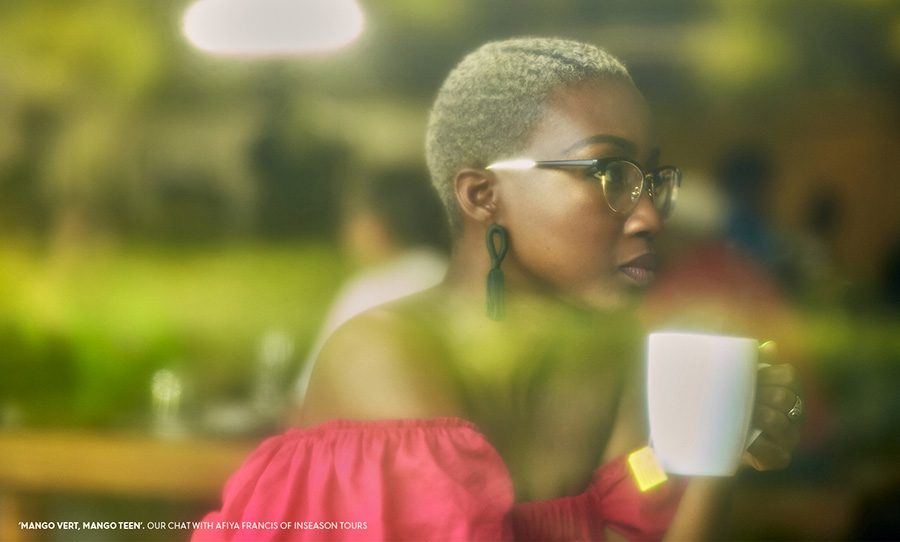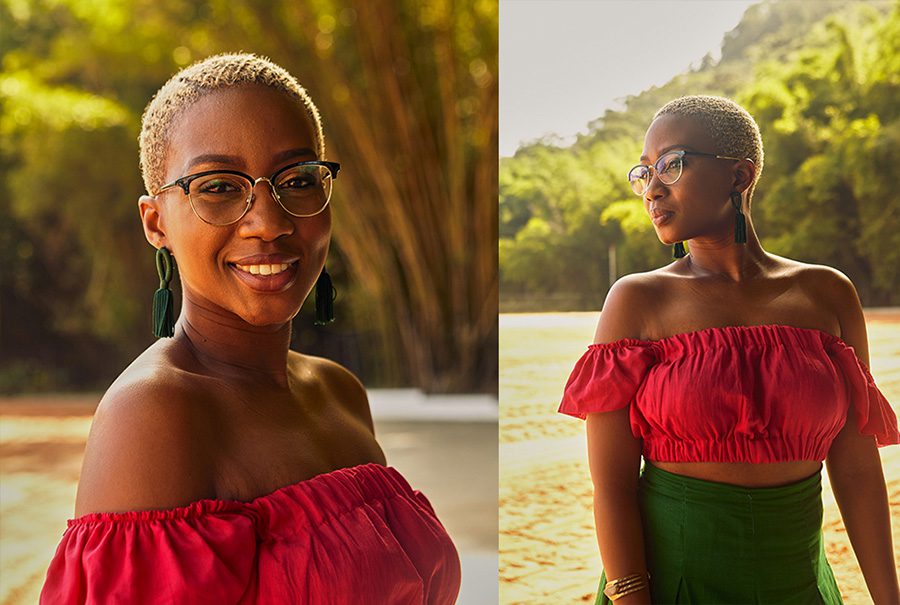

September 13, 2019
On a Sunday morning in early May, I found myself in an empty car park waiting to meet up with the Mother of InSeason Tours Ms Afiya Francis and a horde of other mango lovers. All geared to travel to Mayaro to visit the Nandoo Mango Estate.
The air was thick with anticipation. But mostly it was thick with sunscreen and citronella as we boarded a good ole red band maxi.
Highway stretched into winding back roads and eventually into coconut trees until we swung a right and ventured into an expanse of agricultural lots. Houses dotted along the way spread out like taxis after 8 p.m.
It was so surreal. The image I always conjured of Mayaro was of the beach, never farmland. It really is quite lush. Gently rolling fields as far as the eye can see.
Our feet were happy to find solid ground once more. The scent of fresh earth and rain hit our noses, accompanied by that of a bubbling pot — mango anchar.
After the customary greetings and salutations, Lonella Nandoo brought us to the source of the aroma, her father Kissoondial, was stirring a pot underneath their shed. He proudly showed us the fruits of his culinary labour earlier that morning; announcing that curry would be on the menu later on.
While we waited for him to finish up and for the light rain to subside, we took in the vibrant piles of mangoes and bottled anchar and kuchela for sale.
Raincoats acquired, we set out into four heavenly acres of mango plants, home to over 250 mango trees of numerous varieties.
♪ Mango vert, mango teen, mango Doodouce, Calabash, Zapico all for me. ♪
Well, not quite.
They have Long, Starch, Julie, Rose, Primrose, Doodouce, Box and Spice, Number 11, Mayaro Girl and the beloved “Stinky”- let’s just say it’s an acquired taste.
Mr Nandoo fondly recalled all the “Long” mango plants he purchased between 2008 and 2010. When they started to bear fruit, he realized that he had several varieties on his hands.
Then it became an episode of Maury. Guess the stock.
We were told you could tell the paternity of mangoes by the look of their leaves.
As we wandered the maze-like rows of mango trees, we noticed that the Nandoos are a big fan of intercropping. Robust okra pods fanning out along the path.
Like the Garden of Eden, it has every fruit, root and vegetable imaginable. Your very own backyard grocery. The common and the peculiar. On their estate, you can find mandarin limes, with their alluring orange exterior and surprise sour interior.
Sad to think this paradise was under water for more than two weeks after the dreadful floods of 2018.
After we retired from the field, it was time for lunch. It was delicious. Nothing better than some buttery buss up shut, creamy pumpkin, curry channa and chicken, with a side of mashed ground provisions and homemade mango anchar.
While we could have easily stopped there and walked away cradling our food babies, there was a mango tasting to be done.
Now you see, I have a long-term love affair with Julie. She satisfies me. Ain’t nobody got time for a side piece. Too many strings attached.
However, I ate of the forbidden fruit and was exposed to the joys of a more promiscuous appetite.
Number 11 and Primrose gave Julie a good run for her money.
Unfortunately, they were out of season so we couldn’t purchase any for the road.
See why you must not have a wandering eye when you have a good thing going at home.
Well technically not at home, in my neighbour’s yard, but close enough.
We steal forbidden kisses over the fence.
I catch her when she falls.
All jokes aside, I had a lovely time with the Nandoos. They are incredibly hard-working and down to earth.
Besides being farmers, the Nandoos are also entrepreneurs. They sell packaged frozen Long mango to nearby groceries. At present they are trying to ramp-up production and have recently built a small factory and purchased an industrial freezer. The thing is literally the size of a truck.
The whole operation is a big family affair, ma, pa and their baby girl. They spend several days a week toting hundreds of mangoes from the fields to their production facility. Lonella is integral to the family business. Their productivity is almost doubled when she can give her time away from school.
She is the first in her family to attend university and is pursuing her bachelors in Food Science and Technology. She says she chose the mango life, but the mango life did not choose her, alluding to the hard work, heartbreak and physical pain associated with the path. (She gets burnt by the sap regularly).
Like their drought resistant, beloved mango trees, the Nandoos are incredibly resilient and committed to nurturing their crops and business. Living simply and in harmony with nature. They set an excellent example to follow and alert us to the infinite number of possibilities for sustainably developing our natural resources.
Particularly in an economic climate, where the petrochemical industry is under stress, and we are in great need of economic diversification.
Twas a day well spent.
We left blissfully tired. Our shopping bags weighed down by fresh mangoes, frozen mango, anchar and kuchela.
On the long and bumpy ride back home, I sat with Afiya and listened to her story.
“Trinidad is not just about Carnival. Food is such a big part of who we are.”
60 seconds. What is InSeason Tours all about?
AFIYA: InSeason Tours seeks to teach others about the history and culture of Trinidad and Tobago through food. Food in of itself has so many stories that we can share with each other and with the world. It’s about sharing stories and sharing spaces.
So I know you all got up and running around 2016, what were the circumstances of InSeason’s making?
AFIYA: I have a very colourful background in terms of travel. I didn’t grow up in Trinidad, so to me, my connection to home was always food and music. Additionally, working within Edu-Tourism, taking college students on thematic tours, I’ve realized the one thing they always remember is the food. For me, food is a huge way of connecting people, because that is just what food does. When you eat it’s a personal experience; but when you share it with somebody, it becomes something else. Trinbagonian food has such a way of bringing people together and also helps us to teach people about our history and culture. I mean, we’re a mix, we’re a melting pot. You have everything from Pelau to Callaloo to Curry. It explains who we are.
So what inspired the name?
AFIYA: I’ll go back a bit. I went to Startup Weekend intending to pitch an idea for an agriculture app, and something kept telling me to focus on this food tourism thing you’ve been thinking about for the last couple of months. When I pitched it, the response was overwhelmingly positive, and I even bagged second place. So I went ahead with it, and I was going to call it ‘Eat It Up’ or some foolishness. And then I decided okay, ‘In Season’ makes more sense from a marketing perspective. Food is always in season. Adventure is always in season. If you want to break it down in terms of what is in season, mango is in season, zaboca is in season. So you could always use ‘in season’ as a way to connect people to what your tour is about.
“Trinbagonian food has such a way of bringing people together and also helps us to teach people about our history and culture.”
Can you tell us a little bit about your first tour?
AFIYA: (chuckles) The first tour was a disaster. The first tour was a tour of the Bird Sanctuary, one of my favourite places in Trinidad. I made potatoes and different sides, and we grilled fish on the boat. I was working with a tour operator that I knew well, and we went out to the Gulf of Paria to watch the sunset. It was lovely, but the fire in the grill kept blowing out; so we weren’t able to cook the fish quickly enough. A lot of people were super hungry and frustrated. I mean they were good sports, but it was so embarrassing. When we got back I had to finish cooking the fish, and when you get back to the Bird Sanctuary at that hour, it’s dark and there tons of mosquitoes. It was a disaster, but I didn’t let that stop me.
Tell us a bit about the tours you currently run.
AFIYA: We do several types of tours. We work with people who already have food tours in place, for example, Brasso Seco Cocoa Estate. They have an excellent product, and we want to try and get as many people to their estate as possible. We did a Paramin tour and a chow tour at the Bird Sanctuary. We realized we could still use the Bird Sanctuary. We just couldn’t do the making of anything on the boat. Everything had to be pre-made. So we did the chow tour, which was awesome because we had about five different chows. I had a classmate of mine, who is a caterer make five finger, cucumber, sugarcane, pineapple, mango, everything. Chow became a tool to explain the history of each fruit. Even though they’re not all indigenous to Trinidad, we got to tell the story of how they got here. Trinidad has a lot of places to go, there are a lot of things to see, but it’s just to find them and to fine-tune the logistics of visiting them.
We have even ventured into journaling tours. We have a tour called ‘Food For Thought’. It’s not strictly about food. It’s about feeding the soul. We travel to the North Coast and visit two or three locations, depending on the weather. You receive journal prompts at each site to help you recentre yourself. Everybody is so busy and stressed out these days that sometimes you don’t have time to recalibrate.
It’s been taking us some time to find our feet, we’re not where we think we need to be, but we are getting there. We’re collaborating with people who are in food tourism as well because we realize that working in this industry is difficult and we need all the help we can get. Right now I’m working with ‘Eatahfood’, Baidawi Assing and I work very closely together.
In terms of InSeason Tours do you have staff helping you man the ship?
AFIYA: No, it’s me, myself and I. I am a one woman team for now.
Do you like it like that?
AFIYA: No. Yes and no. As a one-woman team, you learn every part of the business, which is essential for me before I hire anyone else. I need to know what I would want them to do. I can’t just hire staff, and pay them to do nothing. I need to know how to delegate to others. But it will grow, I’m not worried about it.
Walk us through the process of creating a tour.
AFIYA: Creating a tour entails a lot of research and networking. It’s about exchanging stories and ideas. I can’t find these things on the internet; I have to reach out to others. Ask if they know anyone who has an estate or a space they would like to open up to us. Who has an exciting story to share or a business they want to profile? You know, who can we help? Because it’s not just about helping ourselves. It’s about helping the country and showcasing how amazing Trinidad is and how remarkable our farmers and artisans are. It’s not just about InSeason; we’re the last people that we think about. We find out who has a space that they are willing to share with us and walk them through how they might maximize their resources.
If they are willing, we work out the logistics and budget. We project how much revenue is likely to be generated and handle all the advertising and promotion. This Mango Tour was created from scratch. When I visited the Nandoo Estate and told them I wanted to bring people there, they were a bit reluctant at first, but eventually, they came on board. I explained to them exactly what I thought would work, and it panned out perfectly.
“It’s about helping the country and showcasing how amazing Trinidad is and how remarkable our farmers and artisans are.”
What is your vision for InSeason Tours?
AFIYA: It would be lovely to have a schedule of tours every month. Specifically around Carnival time so that people can see that Trinidad is not just about Carnival, that food is such a big part of who we are. One of my biggest goals is to have my own InSeason’s tour bus. A big, bright, obnoxious yellow one, with a big green mango on it. I also want to become an authority on food tourism. I didn’t grow up here so for me I see the value of it, and it’s hard to explain to people who have lived here for so many years and don’t see the value of our food. So if I need to be the one to explain to them then, by all means, let’s make it happen. I want to see Trinidad and Tobago take the title of the ‘Food Capital’ of the Caribbean and take it back from Barbados. Barbados has it right now, and that does not make sense to me.
What do you want people to get out of their experiences with InSeason Tours?
AFIYA: InSeason was never supposed to focus on domestic tourism, but we realized it’s crucial to have your people backing you for your brand to go internationally. If it’s a word of mouth situation where a friend tells a friend who lives abroad, ‘I’ve been on this tour.’ They are more likely to go on the tour because they trust your judgement as a local. Initially, I was looking internationally, and I am still looking at the global market, but I also want to help reclaim that sense of pride I think we lost decades ago. I want to keep pushing domestic tourism and getting people to come on the tours and feel a sense of pride for their country. To reminisce on times when they would go pick mangoes from a tree or enjoy a nice home cooked meal. To get them out of their houses and not tell me that Trinidad has nothing to do.
I want to keep focusing on domestic tourism and teaching people about the process of cultivating food and the farm to table experience and have them leave beaming with pride for their country.
For now, the tours are mainly comprised of locals, but we have conducted some private tours. We had a Senator from Canada who met someone in Tobago that referred her to us. I did a private tour for her of the Waterloo circuit, covering aspects of East Indian history and culture- the Temple in the Sea, East Indian Museum and Hanuman Temple. We have also done tours for Trinity College and some international bloggers. We want to focus on international and regional tourism eventually, but for now, we are putting our energy into domestic tourism because it helps us obtain feedback. Working with local participants helps us to understand the logistics of the tour before we push it out internationally. This is important because our standards, as everyone knows, are different from those abroad.
What memorable feedback have you received?
AFIYA: Our journaling tours aim to take people out of their everyday spaces and expose them to new experiences. On these tours, people get super emotional and can really connect, under the guidance of a behavioural therapist. It is so touching to be a part of these transformative experiences.
We took the Senator from Canada up to Mount Saint Benedict to take in the view and try their yoghurt, and she left in tears with how beautiful, and peaceful Trinidad is. We had two children on tour once, and it was so heart-warming to see how happy they were to be out and about. People seem to forget that we live in such a phenomenal country. It is so fulfilling to see them so happy to be experiencing something different or to reminisce on old times. I get a lot of feedback online, but the real deal is always in watching how people react to the experience.
What lessons have you learnt along the way?
AFIYA: You can’t do everything. I mean if I had it my way I would drive the maxi, I would conduct the tours, I would clean the estates. I would do everything, but you can’t do everything, and you can’t control everything. Sometimes things happen. Sometimes I advertise a tour, and nobody signs up, and that’s okay. Other times I announce a tour and people sign up within an hour. You can’t control it all. It’s a hit or miss.
Tourism is one of those things that’s not necessarily consistent. You have to find other avenues to generate revenue. For us, one of those avenues is merchandise. We started selling mango tote bags; they were a huge hit and sold out in twenty-five minutes. Being in this industry has taught me to be innovative and tap into my creativity. It’s taught me not to be stressed about the fact that I can’t do everything, and to relax and enjoy the process. I am learning so much about my country as I am doing this. I am learning about customer service and dealing with people. It’s not for everyone. You have to have passion and perseverance. I am not going to give up on it.Trinidad is not just about Carnival. Food is such a big part of who we are.
Do you have any parting words?
AFIYA: For me, we don’t know what we have in this country. We don’t know the kind of stories we have. Trinidadians are some of the most amazing storytellers on this planet. We can tell a story like nobody else, but our food tells such a fantastic story about our history. We keep thinking that food is just for sustenance, but it’s not just that. Everything we do involves food. Every celebration we have involves us eating ourselves into a coma. We eat good food, and we enjoy it. We’re not a country that’s big on plating. We’re about flavour and enjoying the process and digging in with our hands. We’re about touch and feel. We’re about the senses. I want people to realize and appreciate what we have. The food we have and what a phenomenal country we live in. We are amazing people. Just be proud, don’t just tell people to come to see Carnival and Soca. We are food. It’s a huge part of our tourism product that I don’t think is realized just yet. That’s why we’re going to be at the front of the line when people come knocking.





INTERVIEWER: BETHANY MILNE. PORTRAIT PHOTOGRAPHER: MARLON JAMES. Photoshoot Location: U Pick. In Season Tour Photographs by: Keron Alleyne